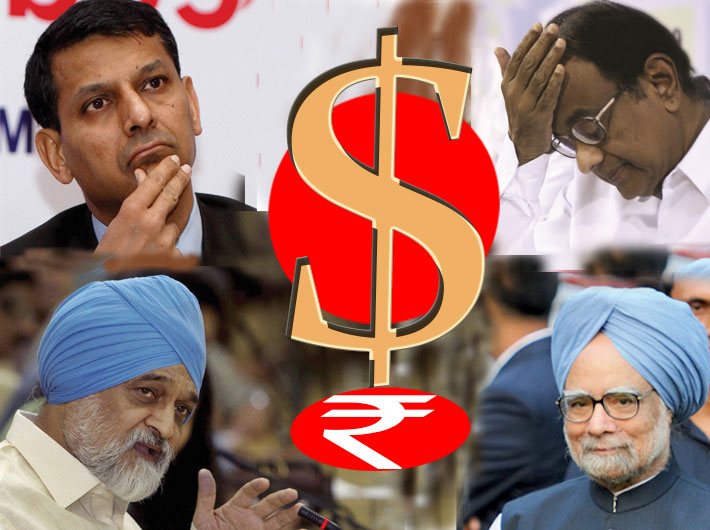Before making an investment, an investor has to consider not only the best-case scenario but also the worst-case scenario – unless a unit is allowed to close down properly if the business goes wrong, investment can become all the more risky.
In that regard, the government has proposed an Insolvency and Bankruptcy Code, and a bill to support it was introduced in the Lok Sabha on December 21 last year. It was referred to a joint committee, which on April 28 gave its report, recommending several worker-friendly provisions (see a Hindu Business Line report here).
The committee’s full report can be found here.
Now the legislation is slated to be passed in the lower house in this session. Here are the highlights of the bill, courtesy PRS Legislative Research:
• The Code seeks to repeal the Presidency Towns Insolvency Act, 1909 and Provincial Insolvency Act, 1920. In addition, it seeks to amend 11 laws, including the Companies Act, 2013, Recovery of Debts Due to Banks and Financial Institutions Act, 1993 and Sick Industrial Companies (Special Provisions) Repeal Act, 2003, among others.
• The Code will apply to companies, partnerships, limited liability partnerships, individuals and any other body specified by the central government.
Insolvency Resolution
• The insolvency resolution process (IRP) for individuals varies from that of companies. These processes may be initiated by either the debtor or the creditors.
• Resolution process for companies and limited liability partnerships: The resolution process will have to be completed within a maximum period of 180 days from the date of registration of the case. This period may be extended by 90 days if 75% of the financial creditors agree. The process will involve negotiations between the debtor and creditors to draft a resolution plan.
• The process will end under two circumstances: (i) when a resolution plan is agreed upon by a majority of the creditors and submitted to the adjudicating authority, or (ii) the time period for negotiation has come to an end. In case a plan cannot be negotiated upon, the company will go into liquidation.
• There will be provision for a fast track insolvency resolution process for companies with smaller operations. The process will have to be completed within 90 days, which may be extended if 75% of financial creditors agree.
• Resolution process for individuals and partnerships: Before going in for insolvency resolution, the debtor may apply for forgiveness of a specified amount of debt, provided that his assets are below a limit set by the central government. This process will have to be completed within six months.
• In case of insolvency resolution, negotiations between the debtor and creditors will be supervised by an insolvency professional. If negotiations succeed, a repayment plan, agreed upon by a majority of the creditors, will be submitted to the adjudicator. If they fail, the matter will proceed to bankruptcy resolution.
Insolvency professionals and agencies:
• The IRP will be managed by a licensed professional. The professional will also control the assets of the debtor during the process. The Code also proposes to set up insolvency professional agencies. These agencies will admit insolvency professionals as members and develop a code of conduct and evolve performance standards for them.
Information Utilities:
The Code proposes to establish information utilities which will maintain a range of financial information about firms. These utilities will collect, collate and disseminate this information to facilitate insolvency resolution proceedings.
Insolvency regulator:
• The Code seeks to establish the Insolvency and Bankruptcy Board of India, to oversee insolvency resolution in the country. The Board will have 10 members, including representatives from the central government and Reserve Bank of India. It will register information utilities, insolvency professionals and insolvency professional agencies under it, and regulate their functioning.
Insolvency and Bankruptcy Fund:
• The Code creates an Insolvency and Bankruptcy Fund. Deposits to the Fund will include: (i) grants made by the central government, (ii) amount deposited by persons, and (iii) interest earned on investments made from the Fund. Any person who has contributed to the Fund may apply for withdrawal, in case of proceedings against him.
Bankruptcy and Insolvency Adjudicators:
• The Code proposes two separate tribunals to adjudicate grievances related to insolvency, bankruptcy and liquidation of different entities under the law: (i) the National Company Law Tribunal will have jurisdiction over companies and limited liability partnerships, and (ii) the Debt Recovery Tribunal will have jurisdiction over individuals and partnership firms. Appeals against orders of these tribunals may be challenged before their respective Appellate Tribunals, and further before the Supreme Court.
Offences and penalties:
• The Bill specifies that for most offences committed by a debtor under corporate insolvency (like concealing property, defrauding creditors, etc.), the penalty will be imprisonment of up to five years, with a fine of up to one crore rupees. For offences committed by an individual (like providing false information), the imprisonment will vary based on the offence. For most of these offences, the fine will not exceed five lakh rupees.
MORE RESOURCES
• The legislation is based on recommendations of the Bankruptcy Law Reforms Committee (BLRC), set up by the finance ministry. The highlights of the recommendations, from the report submitted on November 21, 2015, can be found here.
• The committee report’s summary, prepared by PRS Legislative Research, can be found here.
• A summary of the bill is here.
• The text of the bill.
